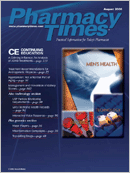Publication
Article
Pharmacy Times
case STUDIES
Author(s):
CASEONE: NH, a 27-year-old fireman, is admitted to the Burn Unit at Saving Grace Hospital. While attempting to rescue a small child from a burning building, he was overcome with fire and smoke. He was found unconscious by another firefighter.
NH has burns covering 50% of his total body surface area with full-thickness burns covering approximately 40% of his total body surface area. On examination, NH is a critically injured, well-developed man. His eyebrows, lashes, and hair are singed. His vital signs are recorded as blood pressure, 110/60 mm Hg; heart rate, 145 beats per minute; respiratory rate, 25. Rales and rhonchi are heard in all lung fields. Bowel sounds are absent in all 4 quadrants. His lower extremities have intact blisters and burns that are pink, blanching with pressure. His upper extremities appear dry and leathery. Coagulated blood vessels are visible under the eschar. Radial and ulnar pulses are absent in the upper extremities. He remains unresponsive to verbal stimuli but responds to pain.
Later, NH becomes more alert, attempting to remove his endotracheal tube and fight the ventilator. The medical resident decides to prescribe a neuromuscular blocking agent and a benzodiazepine. Although he is leaning towards using succinylcholine and diazepam, he has not cared for many burn patients and is not confident in his choice. He decides to ask the pharmacist for a recommendation.
Should the pharmacist agree with the resident's selections or make another recommendation?
CASE TWO: VT, a 55-year-old woman, approaches the counter at Keep Living Pharmacy. She requests to speak with the pharmacist. The technician escorts VT to a vacant counseling room and informs the pharmacist that VT is waiting for her.
When the pharmacist enters the room, VT explains that she would like a recommendation to treat her allergies. She is convinced that allergy season must be starting because her eyes are bothering her. VT explains that she has developed a painful red eye. In the morning, her eyelids stick together. The redness and discharge began 2 days ago. She also admits to some visual disturbances and sensitivity to light.
The pharmacist notices that VT's right eye has a brilliant red appearance, more intense at the limbus. The right eye is tearing continuously. She notices a mucopurulent discharge. The left eye appears marginally red. The eyelids are moderately swollen. She does not note any evidence of trauma.
Should the pharmacist agree with VT's assessment that her eye problems are due to allergies?
Dr. Schlesselman is an assistant clinical professor at the University of Connecticut School of Pharmacy.
Click Here For The Answer ----------->
[-]
CASE ONE: Due to the risk of severe hyperkalemia in burn patients, the administration of succinylcholine should be avoided. The resident should be advised that decreased potency of nondepolarizing neuromuscular blocking agents is observed in burn victims. As long as the degree of paralysis is monitored, by such means as a peripheral nerve stimulator, this will not limit their use. Burn victims demonstrate impaired phase I hepatic metabolism but not impaired phase II hepatic metabolism. For this reason, lorazepam would be preferred over diazepam in these patients to avoid unwanted accumulation of the benzodiazepine. CASE TWO: VT's signs and symptoms are more consistent with bacterial conjunctivitis than with allergic conjunctivitis. Bacterial conjunctivitis causes profuse purulent discharge and moderate tearing with minimal itching. Allergic conjunctivitis causes minimal discharge and tearing, accompanied by profound itching.
toggle(getObject('exp1048685570_link'), 'exp1048685570');







